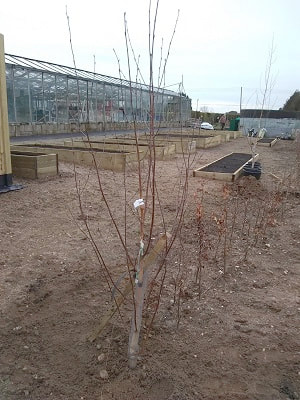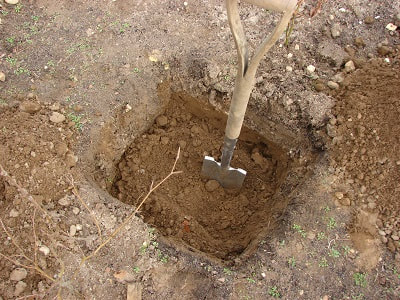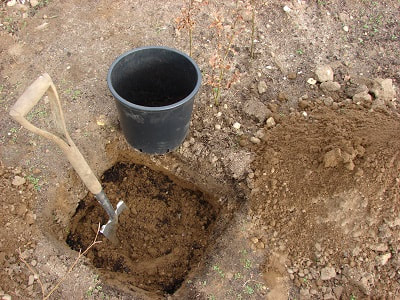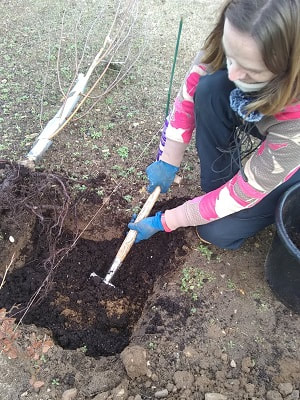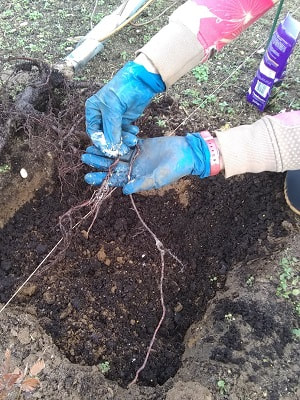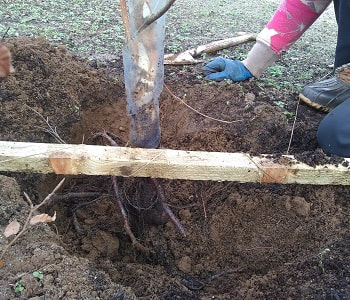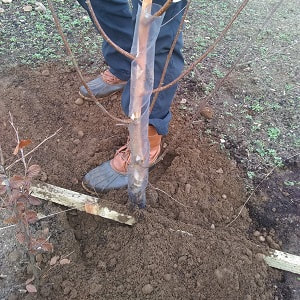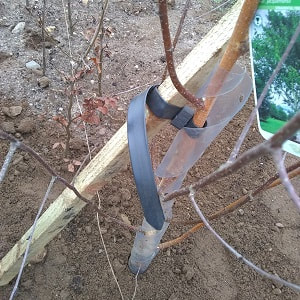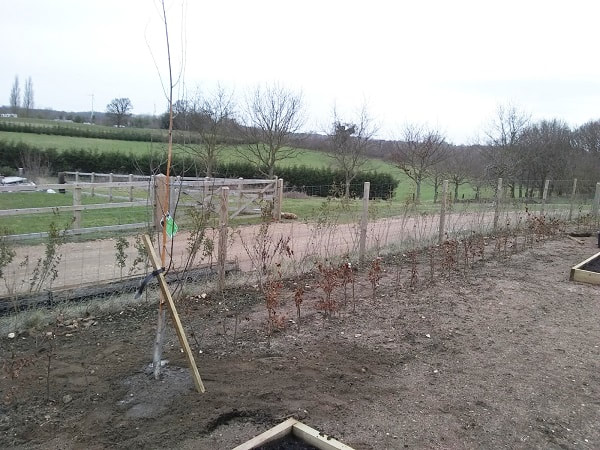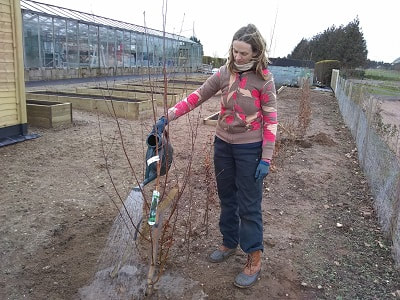1. Give your tree a good watering about 30-60 minutes beforehand. This gives enough time for the water to soak all the way through and for the roots to drink it up. This helps to plump up the roots and protect them from damage during the planting process, and also makes the tree easier to get out of the pot! 2. Dig a hole! Some people favour square holes: the theory is that roots will follow the outer curves of a round hole, as it is less effort than breaking through the undisturbed soil that surrounds the planting hole. Whereas with a square hole it is more effort for roots to make a 90 degree turn at the edge than it is to carry on going. The more spread out the root system the better: the tree will be better anchored to the ground, and it will be able to draw on water and nutrients from a large area. We have a loose, sandy soil at Newbourne so we doubt the shape of the hole makes much difference - no roots could be that lazy!
6. Tread down the soil mix with your feet. You are trying to firm down the tree and remove any large air pockets: you are not trying to concrete it in place so don't get carried away! While you are doing this make sure the trunk is straight from all angles: you don't want it on the huh before it's even had a chance to get going! Ideally a second person will be able to give you help with this ("Lean it towards me a bit, now that way a bit, no, back a bit"!) 7. Some people are against using tree stakes as they think it is mollycoddling the plant. However, our light sandy soil will make it difficult for the trees to firmly anchor themselves, and the site is relatively exposed to the wind, so we do think they will need the help. The aim is not to immobilise the tree, just to stop it being blown over in strong wind. All plants need to sway a little in the breeze (even seedlings) - fighting against this is what builds up their "muscles" and makes them better, stronger plants. We went with using single stakes, put in diagonally. Our most problematic winds come from roughly the direction of the BT Tower at Martlesham, so that is the direction the tops of the stakes face (think of when you lean yourself into the wind when walking along the seafront!).
Comments are closed.
|
Archives
July 2024
Categories |
HoursEvery day: 10am - 4pm
|
Telephone |
|
Newsletters |
Rewards club |


